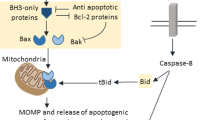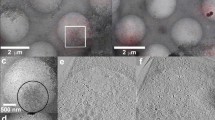Abstract
PALADE1 was the first to observe with the electron microscope that the plasma membrane forms invagnations which occasionally plunge deeply into the cell body. He has shown that the lumen of the infoldings of the cell membrane communicates with the interior of the endoplasmic reticulum. Watson2 showed that in certain cells the outer nuclear membrane is continuous with the membrane system of Palade's reticulum. Therefore, his ‘perinuclear space’ is part and parcel of the cavities of the endoplasmic reticulum. By demonstrating that the inner and outer nuclear membranes fuse at the edges of the nuclear pore, Watson2 suggested that the nuclear envelope is simply a specialized form of endoplasmic reticulum.
This is a preview of subscription content, access via your institution
Access options
Subscribe to this journal
Receive 51 print issues and online access
$199.00 per year
only $3.90 per issue
Buy this article
- Purchase on Springer Link
- Instant access to full article PDF
Prices may be subject to local taxes which are calculated during checkout
Similar content being viewed by others
References
Palade, G. E., J. Biophys. Biochem. Cytol., 1, 69 (1955).
Watson, M. L., J. Biophys. Biochem. Cytol., 1, 257 (1955).
Epstein, M. A., J. Biophys. Biochem. Cytol., 3, 851 (1957).
Palade, G. E., J. Biophys. Biochem. Cytol., 2, 4 Supp. 85 (1956).
Author information
Authors and Affiliations
Rights and permissions
About this article
Cite this article
DE GROODT, M., DEROM, F., LAGASSE, A. et al. Fine Structure of the Nuclear Envelope of Carcinoma Cells. Nature 182, 1030–1031 (1958). https://doi.org/10.1038/1821030a0
Issue Date:
DOI: https://doi.org/10.1038/1821030a0
Comments
By submitting a comment you agree to abide by our Terms and Community Guidelines. If you find something abusive or that does not comply with our terms or guidelines please flag it as inappropriate.



